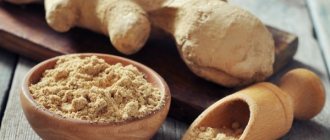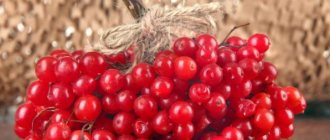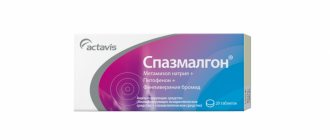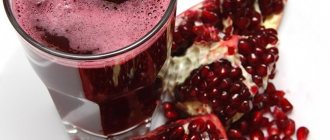Milk is found not only in its pure form, but is also included in many food products. The beneficial substances included in its composition form the basis for the full functioning of the cardiovascular system. Is there a relationship between milk and blood pressure? Is it possible to drink this product if you have hyper- or hypotension and how will this affect the general condition of the body? Is the ban on milk after 40 a myth or not? We will try to figure it out and together find answers to the readers’ questions.
Effect on blood pressure
Based on the results of studies of the diet of older people, scientists have come to the conclusion that daily consumption of milk, as a preventive measure, reduces the risk of hypertension in the future. However, if the disease is already progressing, this will not play a significant role. Unfortunately, milk will not help with high blood pressure or hypotension; scientists from the University of York came to this conclusion.
Milk does not have a significant effect on blood pressure and is used only as a means of prevention.
Natural warm milk eliminates the symptoms of hypertension. This is due to its calming effect. But drinking hot or too cold milk will definitely cause vasospasm and provoke an increase in it.
Beneficial features
This versatile product is rich in nutrients and components that can stabilize blood pressure. Milk contains:
- macroelements - K, Ca, Mg, Na, S, P, Cl;
- trace elements - Al, Fe, I, Co, Mn, Cu, Mo, Sn, Se, Sr, F, Cr, Zn;
- digestible carbohydrates;
- amino acids;
- saturated fatty acids;
- monounsaturated and polyunsaturated fatty acids;
- vitamins;
- proteins;
- water.
In addition, some trace elements included in its composition have a direct effect on the activity of the cardiovascular system:
- Ca - strengthens the heart muscle and blood vessel walls;
- Mg and K - remove cholesterol, thin the blood, prevent the formation of atherosclerotic plaques, and prevent arrhythmia.
Can it harm the body?
Can milk harm the body? To answer this question, let’s pay attention to its composition:
- The main protein found in whole milk is casein, which has a glue-like consistency. Once in the human body, it is not able to break down completely, however, it is perfectly absorbed into the blood, creating additional stress on the kidneys, which can trigger the development of diabetes and allergies.
- After oxidation, milk fats pose a danger to adults. It is they, turning into oxidized cholesterol, that cause more harm to the body than regular cholesterol.
- Lactose. This substance can be absorbed by the body only with the help of bacteria that live in the intestines, breaking down into glucose and galactose. The latter is practically not absorbed and is difficult to remove from the body, accumulating over the years and provoking the development of cardiovascular diseases and obesity.
Calcium. Despite the fact that this element is most abundant, there is no guarantee that it will be completely absorbed by the body and will not subsequently cause additional problems. Its excess, entering into chemical reactions, can be deposited on the walls of blood vessels, forming so-called plaques. And the fact that it is calcium that provokes the formation of kidney stones is known to most patients who monitor their diet. Moreover, the process of pasteurization of a natural drink contributes to the formation of a microelement necessary for us into a chemical compound - calcium phosphate, which can subsequently accumulate in the pancreas or kidneys in the form of phosphate stones.
And also read on our website: How do nuts affect blood pressure levels - do they increase or decrease and how to take them for hypertension?
The conclusion suggests itself: it turns out that milk is not the most harmless food product.
People over 45 years old are recommended to replace whole milk with fermented milk products.
Should you drink milk: a nutritionist on the benefits and dangers of your favorite product
Since childhood, most people perceive milk as an integral element of proper nutrition, but recently more and more studies have appeared indicating the dangers of this product. On World Milk Day, a RIAMO correspondent together with nutritionist Natalya Pugacheva tried to figure out whether it’s worth drinking milk, what arguments its supporters and opponents give, and how to choose a quality product.
Proteins, fats and essential minerals
According to Natalya Pugacheva, a nutritionist at the Health Management Clinic of the Institute of Personalized Medicine at Sechenov University, milk is one of the whole food products; it cannot be considered clearly a friend or an enemy.
“Milk and dairy products are rich in complete, easily digestible protein - cottage cheese and cheeses are not inferior in the amount of protein to meat and fish. Milk fat is very heterogeneous in composition and, in addition to saturated fats and dietary cholesterol, the dangers of which are often exaggerated, contains essential fatty acids, mono- and polyunsaturated. The milk fat drops also contain lecithin, fat-soluble vitamins A, E, and D,” says the expert.
Milk protein, like fat, according to the expert, is heterogeneous - it consists of casein and whey proteins (lactoglobulins and lactoalbumins). Thanks to this, it is complete and is 95% absorbed by the body.
For comparison, the expert cites the example of legume protein, which, despite its high nutritional value, the body can only absorb 30-40%.
The nutritionist considers the mineral composition to be another indisputable advantage of milk and products made from it. “First of all, we are talking about calcium. There is relatively little of it in milk or kefir itself - about 100 milligrams per 100 grams (with an average daily intake of 1000 milligrams). But hard cheese already contains 1000 milligrams of calcium per 100 grams. Taking into account the fact that with dairy products a person receives calcium in an optimal combination with vitamin D and phosphorus, it is difficult to replace them with something else,” Natalya Pugacheva is convinced.
For sufficient calcium intake, she advises consuming two to three servings of dairy products per day, for example, a glass of milk or kefir, 100 grams of cottage cheese and 30 grams of cheese.
Increased insulin, bad cholesterol and estrogens
Over time, information about the dangers of milk is becoming more and more: the popular product is accused of leading to brittle bones and increasing mortality rates. In milk, scientists found an insulin-like growth factor, which is considered one of the prerequisites for excess weight and cancer, as well as cholesterol, which causes atherosclerosis. In addition, the product that cows produce during pregnancy contains estrogens.
“Most of the accusations against milk appeared, oddly enough, in the wake of scientific discoveries, but if you look at the research results without hysterics and loud revelations, everything is not entirely true,” Natalya Pugacheva is sure.
According to the nutritionist, there is indeed a growth factor in milk, but its share is less than one percent of a similar factor produced by the body. A high insulin index is also present, but the increase in insulin levels after consuming dairy products was not associated with increased glucose levels, an increased risk of diabetes, or obesity in the studies. It's the same with cholesterol.
“Excess dietary cholesterol is harmful, more than 300-400 milligrams per day. This amount can be found in 3-4 liters of milk, 500 grams of cottage cheese or 250 grams of cheese. But such portions will seem unreasonable for most people,” explains Natalya Pugacheva.
The results of a study on the effect of milk on increasing mortality rates, which was conducted at Harvard University, are also ambiguous. Scientists compared groups that drank different amounts of milk. A higher mortality rate was observed when consuming 7 or more servings.
“The researchers themselves make a reservation that people in this group generally ate much more - not just milk. It’s difficult to pinpoint milk as the reason for the deterioration of their health,” comments the nutritionist.
Who shouldn't have milk?
Despite the controversial arguments of the “opponents” of milk, there are people who should not drink it.
First of all, these are those who are allergic to a certain protein, most often casein. “Allergies appear already in infancy, when feeding with formula or cow's milk begins.
The symptom can be either a disruption of the intestines or a skin rash,” says Natalya Pugacheva. People with lactose intolerance, that is, milk sugar, also need to be careful with dairy products.
In infancy, it is absorbed by the enzyme lactase. As you grow older and switch to an adult diet, the activity of the enzyme decreases, and milk sugar is less absorbed, and its excess in the intestines disrupts the functioning of the microflora. “Lactase deficiency in adults is determined genetically. A lot of data has been accumulated on population differences in the activity of the gene responsible for this enzyme.
Thus, among the indigenous inhabitants of northern Europe, people with lactose intolerance are much less common than among people from Asia or Africa,” explains the nutritionist. According to her, absolute intolerance is rare - more often its manifestations depend on the quality of the milk consumed. People over 25 years old can skip whole milk altogether, getting the necessary vitamins and minerals from fermented milk products, such as cottage cheese or cottage cheese. During their production, lactic acid bacteria “eat up” almost all the lactose.
In addition, people with lactose intolerance can replace regular milk with lactose-free or plant-based milk. When making lactose-free milk, the lactase enzyme is added to regular milk, and a product with already broken down sugar ends up on store shelves.
Plant-based versions resemble milk made from seeds, nuts, or grains in appearance. “Plant milk is a wonderful product in every way. It is a source of vegetable protein and healthy fats, vitamins and microelements. In addition, this “milk” also contains dietary fiber. Vitamins D and B12 are added to some types, which are not found in the original cereals or seeds. This makes plant milk especially attractive for vegetarians,” says Natalya Pugacheva.
Which milk to choose
According to information posted on the Roskachestvo website, the safest way to buy milk is to choose a product from a large manufacturer in a supermarket. Milk purchased at the market from a farmer or from a neighbor's grandmother is not always safe, because the owners may not notice the disease in the cow in the early stages.
You should also be careful with milk dispensers that sell raw milk. If boiling instructions are not followed, the consumer may receive unwanted microflora in addition to their morning cup of milk.
Roskoshestvo experts do not recommend consuming raw milk - it is better to pay attention to pasteurized, ultra-pasteurized or sterilized milk.
These heat treatment methods differ in the temperature and duration of heating the milk. For example, pasteurized milk is heated to 70 degrees, which preserves all its beneficial properties. The shelf life of such a product is 5-10 days. Ultra-pasteurized and sterilized milk have a significantly longer shelf life - up to six months at a temperature not exceeding +25 degrees. To achieve this, the milk is heated strongly - in the first case to 137 degrees for a few seconds, in the second to one hundred for 20 minutes. When buying milk, you need to pay attention to the packaging. It must be opaque and airtight - bacteria can enter the product along with air, and in sunlight, milk fat is susceptible to photo-oxidation. If the packaging is damaged, the expiration date has expired, or the milk was stored in incorrect conditions, for example, pasteurized outside the refrigerator, you should not buy the product - it may be spoiled. Link to publication: korzinka.riamo.ru
Contraindications
Considering the above, milk is contraindicated for the following categories of people:
- suffering from lactulose deficiency;
- prone to the deposition of calcium salts in blood vessels and the formation of phosphate stones in the kidneys;
- for allergy sufferers and individuals with individual lactase intolerance.
Restrictions
Hypertensive patients should not overuse dairy products that are too fatty, as this can lead to excess weight and cause surges in blood pressure. However, you should not completely exclude it from your diet; the main thing is to adhere to the norms approved by your doctor. It is also not recommended to consume milk that is too hot or cold, as this will cause vasospasm and increase blood pressure.
Eggs registered
We are traditionally told that eggs are high in cholesterol and that they are undesirable for heart patients. But there are studies in which they actually helped reduce blood pressure. Dairy products cope even better with this.
The mechanism of action of dairy products is similar to the action of the most popular drugs for hypertension - they are called “prils”, and they are well known to hypertensive patients. When digested, milk proteins break down into polypeptides - these are “fragments” of protein consisting of several amino acids. And some of them act like drugs. Eggs are another product that, when digested, also produces polypeptide drugs.
On average, regular consumption of dairy products reduced upper (systolic) blood pressure by 5.1 mmHg. Art., and the lower (diastolic) - by 2.4 mm Hg. Art. Medicines, of course, are stronger, but this is a very useful effect in addition to them. Thanks to it, the risk of heart attacks, strokes and other complications is significantly reduced. And with prehypertension, or in people prone to it, such nutrition will delay the development of the disease. How to treat all this? From dairy products, it is best to eat 150-200 g of yogurt, kefir, any other fermented milk or cottage cheese daily. Ricotta cheese is very good. It is similar to unleavened cottage cheese, and is made only from whey, which contains a lot of good proteins. Ricotta is sold in all chain stores, but it is a little more expensive than cottage cheese, and less people buy it. Eggs, according to modern views, can be eaten 5 times a week, one at a time.
How to drink with hypertension?
In its purest form
When consuming fresh milk, follow these guidelines:
- drink it warm, in small sips, 1.5 hours before meals;
- add fresh or frozen berries and fruits;
- use in preparing porridges, puddings or other favorite dishes;
- do not combine with smoked meats, salted fish, sausages;
- do not wash down the baked goods with it;
- do not drink immediately after eating.
With tea
Fresh and properly prepared milk tea effectively lowers blood pressure.
Cooking method:
- boil the milk in advance;
- pour boiling water over half the container of tea leaves;
- After 1-2 minutes, fill it completely.
Before drinking, you should first pour milk into the cup and only then add tea. Drink no more than two cups per day.
This drink will help get rid of swelling and reduce the risk of heart attack and stroke.
With garlic
Milk with garlic has long been known as an effective remedy for hypertension.
Infusion recipe:
- Peel the middle head of garlic and break it into cloves;
- grind;
- add 200 ml of warm low-fat milk;
- leave for three hours for the drink to infuse.
And also read on our website: How does cognac affect blood pressure: does it increase or decrease, and can you drink it with high or low blood pressure?
The prepared infusion should be taken for 7 days, drinking it 15 minutes after meals. Then take a short break from taking it, a couple of days will be enough, and repeat the weekly course.
Method of preparing the decoction
- 3-4 heads of garlic, medium size, peeled;
- pour 3 glasses of milk;
- put on low heat;
- Cook the garlic until it becomes soft;
- then cool the broth and strain.
Take the resulting drink 3 times a day, half a tablespoon after meals, for two weeks. Then you should take a break for the same number of days and repeat the course.
With honey
A glass of warm milk with honey drunk at night will help stabilize blood pressure and ensure sound, healthy sleep. This drink is usually recommended for hypertensive patients. When preparing the drink, you should not add additional ingredients other than a tablespoon of honey dissolved in it.
A hot drink will reduce the content of nutrients and will not be beneficial.
Products that reduce blood pressure
For foods to fight hypertension, they must contain potassium, magnesium, fiber and should not contain sodium.
Greens lower blood pressure
Potassium helps the kidneys get rid of more sodium through urine. This, in turn, lowers blood pressure. Foods high in potassium include:
- romaine lettuce
- arugula
- kale
- turnip
- greenery
- spinach
- beet greens
Greens should be eaten raw and stored frozen. Don't eat canned greens; salt is often added to them. To make it tastier, you can mix greens with a banana, try it, you will be pleasantly surprised by the new taste.
Berries that lower blood pressure
Berries, especially blueberries, are rich in flavonoids. Research shows that consuming flavonoids can prevent hypertension and help lower blood pressure. In addition to blueberries, these beneficial compounds are found in raspberries and strawberries.
How beets reduce blood pressure
Beets contain nitric oxide, which dilates blood vessels and lowers blood pressure. The beneficial substances contained in beet juice help maintain normal blood pressure throughout the day.
How to eat beets? You can juice or simply grate and eat the beets raw. You can fry or stew it, or bake it.
Skim milk and yogurt
Skim milk is an excellent low-fat source of calcium. Low-fat dairy products are important parts of a diet to lower blood pressure. If you don't like milk, choose yogurt, but be careful about the sugar content in this product. Give preference to unsweetened yogurt.
Oatmeal
Oatmeal makes our list because it's high in fiber, low in sodium, and low in fat. Oatmeal for breakfast is a great way to fill up and is an excellent prevention of hypertension.
Bananas
Products that lower blood pressure must contain potassium. This includes banana. By cutting a banana into your oatmeal, you not only add an interesting taste to your morning dish, but above all, take care of your health.
Salmon
Salmon is an excellent source of omega-3 fatty acids, which not only lower blood pressure, but also prevent inflammation in the body. In addition, salmon contains vitamin D. Just bake the fish for dinner. it's fast, tasty and healthy.
Pumpkin and sunflower seeds
A favorite of many, the seeds contain potassium, magnesium and other minerals that can lower blood pressure. The main rule is to eat the seeds unsalted.
Garlic and spices
Garlic has the same effect on the body as beets. It also contains nitric oxide, which helps lower blood pressure. In general, aromatic spices can help you reduce your salt intake, which will also help keep your blood pressure normal. Include thyme, rosemary, basil, and cinnamon in your diet.
Dark chocolate
Dark chocolate contains more than 60% cocoa and has less sugar than regular chocolate.
Which one to choose?
As a healing drink, it is advisable to use natural, low-fat country cow's milk.
Whole fat milk contributes to the appearance of excess weight and sooner or later will provoke an increase in blood pressure.
Try to avoid goat's milk, which has a high fat content. Give preference to the low-fat version. It is more useful, since the casein contained in it is easier to digest.
Medicine from cleanings
Potassium plays a major role in reducing blood pressure, and magnesium plays a major role in protecting blood vessels. But our diet contains few of these elements. There are several ways to increase your consumption. Salt is sold specially enriched with potassium and magnesium. You also need products rich in them. First of all, these are tropical fruits. Of those sold, the best sources are kiwi and bananas. There are good doses of potassium in prunes, dried apricots, beans and native potatoes, but not boiled, but baked or fried directly in the skin. If you make chips just from potato skins with spices and no salt, they will be a superfood - tons of potassium plus few calories and carbohydrates.
Doctors in Western countries and increasingly in Russia recommend the DUSH diet to hypertensive patients (these four letters encode its full name - “Dietary methods of stopping hypertension”). It is used together with medications, and in the early stages without pills. This diet is rich in fruits, vegetables, low-fat dairy products, whole grains (porridge and bread), lean meats and fish. And the consumption of confectionery and other sweets, desserts and drinks containing sugar is limited. In studies, such a diet also helped reduce blood pressure.











